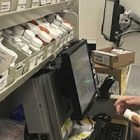Unless you’ve been living under a rock, you know you can’t turn on the news, read news online or in a newspaper, or attend an event, or go anywhere – in person or online – without seeing or hearing something about the 2019 coronavirus.
It’s the only health-related story that can knock the horror of uncontrolled medical bills lower down the list of headlines. And, of course, because its eventual impact is totally unknown, it frightens people in ways only the media knows how to frighten people.
Since we all work in the world of health and medical care, and because advocates are known to be straight-shooters (because our allegiance is only to patients!) you may find friends, family, clients, and potential clients turning to you for information, asking you questions about the virus. I know this because in 2009, when the Swine Flu (H1N1) hit, I was writing for About.com (now VeryWellHealth.com ) and the number of people reading my articles shot from about 20,000 a day to 100,000+ readers per day – all reading articles I had written about Swine Flu from a patient’s point of view. From curtailing conspiracy theories, to dos’ and don’ts, to staying safe, etc… They weren’t science. They were reassurance through facts, focused on providing peace of mind.
Now, fast forward 10+ years, and it’s time for all patient advocates to step up to that role. Everyone can access the web and read what’s there – frightening information put out there by groups that DO want us to be afraid, and groups who DO want us to spend money to allay our fears.
So – as advocates and care managers – let’s see what we can do to be different!
 This is an exercise in turning a challenge into something positive with four goals:
This is an exercise in turning a challenge into something positive with four goals:
- to be useful
- to support peace of mind for our loved ones, friends, and clients
- to be recognized as a proactive advocate and leader
- to improve the regard for our businesses, too.
Here are some ideas for steps you can take, in no particular order. They are intended simply to get your own creative and reassuring juices flowing.
- Learn what you can about the science of the virus, the truth of its spread, and the reality of the danger, from sources that have nothing to gain by shocking us into some action. The best resources are often government organizations (CDC, NIH, Public Health Agency of Canada), or academic organizations (medical universities, research laboratories.) When you become knowledgeable, you can not only be reassuring, but you will be respected for your approach to scary topics. Continue learning everything you can as long as there is interest in the virus.

I always find it most interesting to learn, then share, something unusual like unusual facts or debunked conspiracy theories. Example: The coronavirus (which is spelled exactly that way, with no space and no capital letters) has been around for many years. What is recent is that a new strain of the disease began to spread from Wuhan, China in 2019, which caused the World Health Organization to give this particular coronavirus its own name: COVID-19, or 2019-nCoV. - Share what you have learned. While you should probably avoid in-person events, you can instead offer a webinar or teleconference on the topic to people in your network. Prepare a presentation – a discussion and a powerpoint – and be prepared to answer questions.
- Write blog posts that can be useful to your readers. Promote them through your newsletter.
- Issue your regular newsletter, or a special email outreach, including information and specific action steps readers can take to protect themselves and their loved ones. Tackle conspiracy theories head-on. Don’t be afraid to be controversial, but don’t make suggestions that puts anyone in harm’s way, either. Share that interesting information you’ve learned (cited in #1 above).
- Reach out to your local press and offer to provide them with those similar points of view (the ones you’ve developed for 2 through 5 above) in an interview, or to be a go-to resource person when they want to localize a coronavirus story.

- Do as you say – and as you do. Don’t start giving advice to others only to (publicly) ignore it yourself.
- Consider how you will conduct your own business knowing what the impact might be on your ability to meet in homes or hospitals. For example, is this the time to learn how to engage clients and potential clients in video meetings?
- Get and give away virus-related SWAG (SWAG = Stuff We All Get – tchotchkes and promotional giveaways) with your logo on it to give away to others. Hand sanitizer or ? Even a fact-sheet with your logo on it can be useful and seen as thoughtful and proactive. (See? I told you – I’m just typing out loud here!)
… OK. There’s a start. What great ideas can you come up with?
Remember, the key here is to take a challenging situation, something that must be dealt with in our line of work, and figure out how to turn it into something others can benefit from, with a goal of making yourself look smart and good.

I know this group. I know you are capable. I can’t wait to see what you come up with! And I hope you’ll even consider sharing your ideas below.
Let me also take this opportunity to say – please be careful yourself! We are variously threatened by Covid-19 depending on where we are located, how old we are, our levels of immunity, and more. I hope never to hear that one of you has been negatively affected by this or any other infectious disease.
LEARN ABOUT APHA MEMBERSHIP | MASTER LIST OF PRACTICE RESOURCES | ONLINE COURSES TO LEARN ADVOCACY






Hi Trisha,
I’ve written an extensive blog on this topic and Advocacy Best Practices that your readers may be interested in. I’m a family physician, now working as an advocate and feel it’s critical we prepare our clients for COVID-19. Caryn Cochran also speaks in the video re ways of helping yourself and your clients manage the anxiety produced during this epidemic. You can find the video and the transcipt on my blog at
https://www.togetherpatientadvocates.com/blog/covid-19-and-advocacy-best-practices